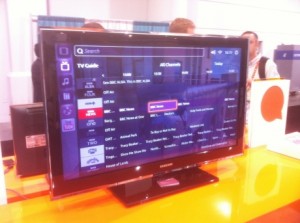 A few months ago we reported that popular Linux build Ubuntu announced that it plans to expand its coverage from just PCs and expand to mobile devices. According to Canonical founder Mark Shuttleworth, the plan is for Ubuntu to eventually be installed on “tablets, phones, TVs and smart screens.” Using Ubuntu will create a seamless integration between various devices, the desktop, the servers and the cloud.
A few months ago we reported that popular Linux build Ubuntu announced that it plans to expand its coverage from just PCs and expand to mobile devices. According to Canonical founder Mark Shuttleworth, the plan is for Ubuntu to eventually be installed on “tablets, phones, TVs and smart screens.” Using Ubuntu will create a seamless integration between various devices, the desktop, the servers and the cloud.
Ubuntu has gotten some mixed responses upon the announcement of its bold plan to go mobile. Some liked it, some were skeptical and others were plain apathetic about it. Ubuntu has been relatively quiet about since the announcement but the progress of its project… until CES when it finally unveiled the Ubuntu smart TV interface.
According to the guys at Ubuntu, the Ubuntu TV is a “vision of how TV will work in the future.” The Ubuntu TV concept allows a user to watch a broadcast or streaming content but also lets them access their own media files that are stored on the cloud. The whole concept is built into the TV itself – effectively eliminating set top boxes or other separate devices. Canonical said there is no browser option in their interface because they do not believe that a browser has a place in a TV set.
Although the Ubuntu TV concept is a good one, Canonical will likely face a huge challenge getting its system adopted by TV manufacturers. Content companies will also be another hurdle that the company will have to face and they are notoriously difficult to deal with. Fortunately, Canonical has also made the right decision of just sticking to what it knows best – being an operating system. It has already announced that it has no plans of producing its own content, which will make it easier to sell to manufacturers and content holders. By not infringing on a lot of other people’s territories, it may be the strategy that will make it an easier sell to the people it needs to partner with to bring it to end users.
Originally posted on January 30, 2012 @ 7:20 pm